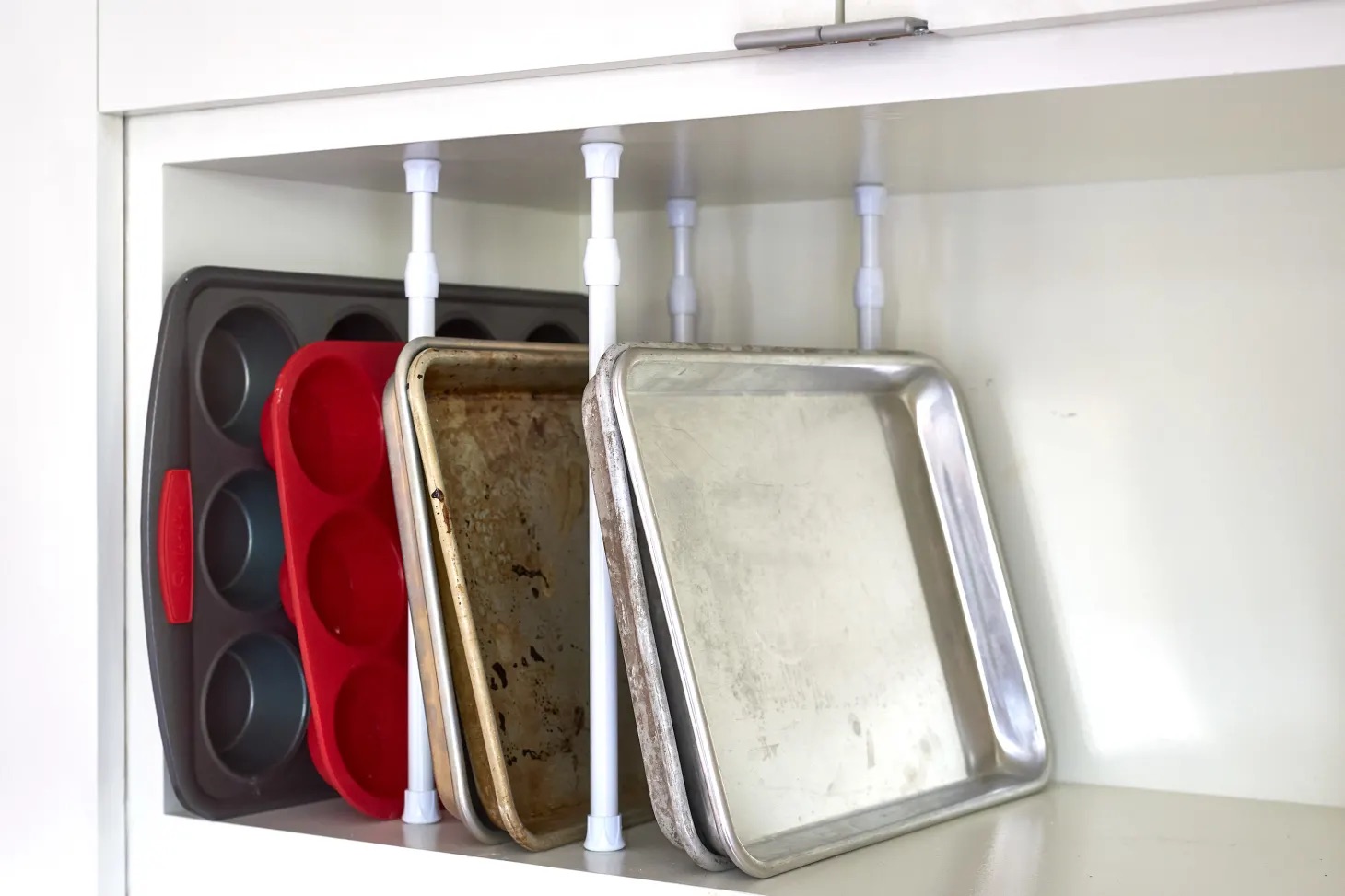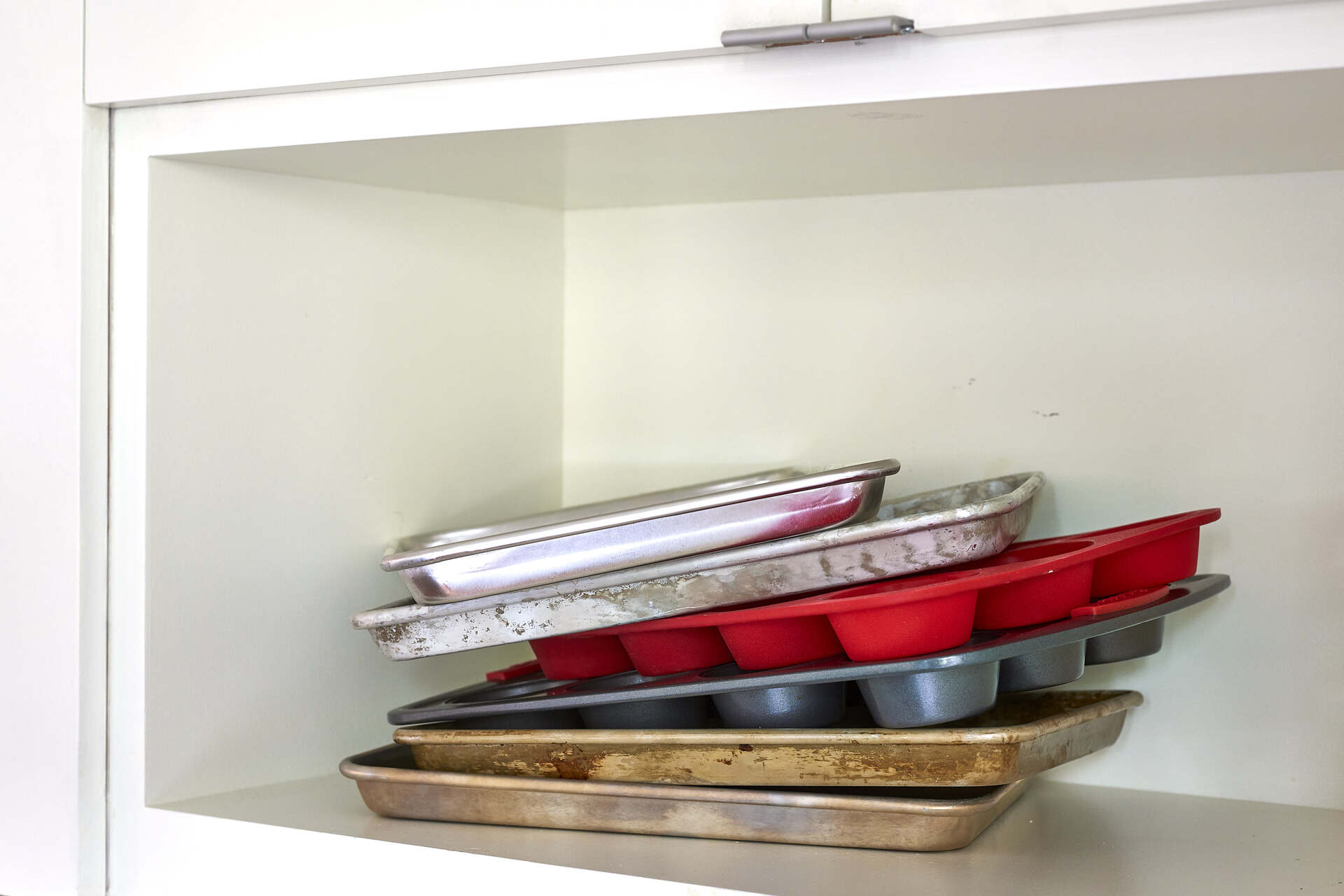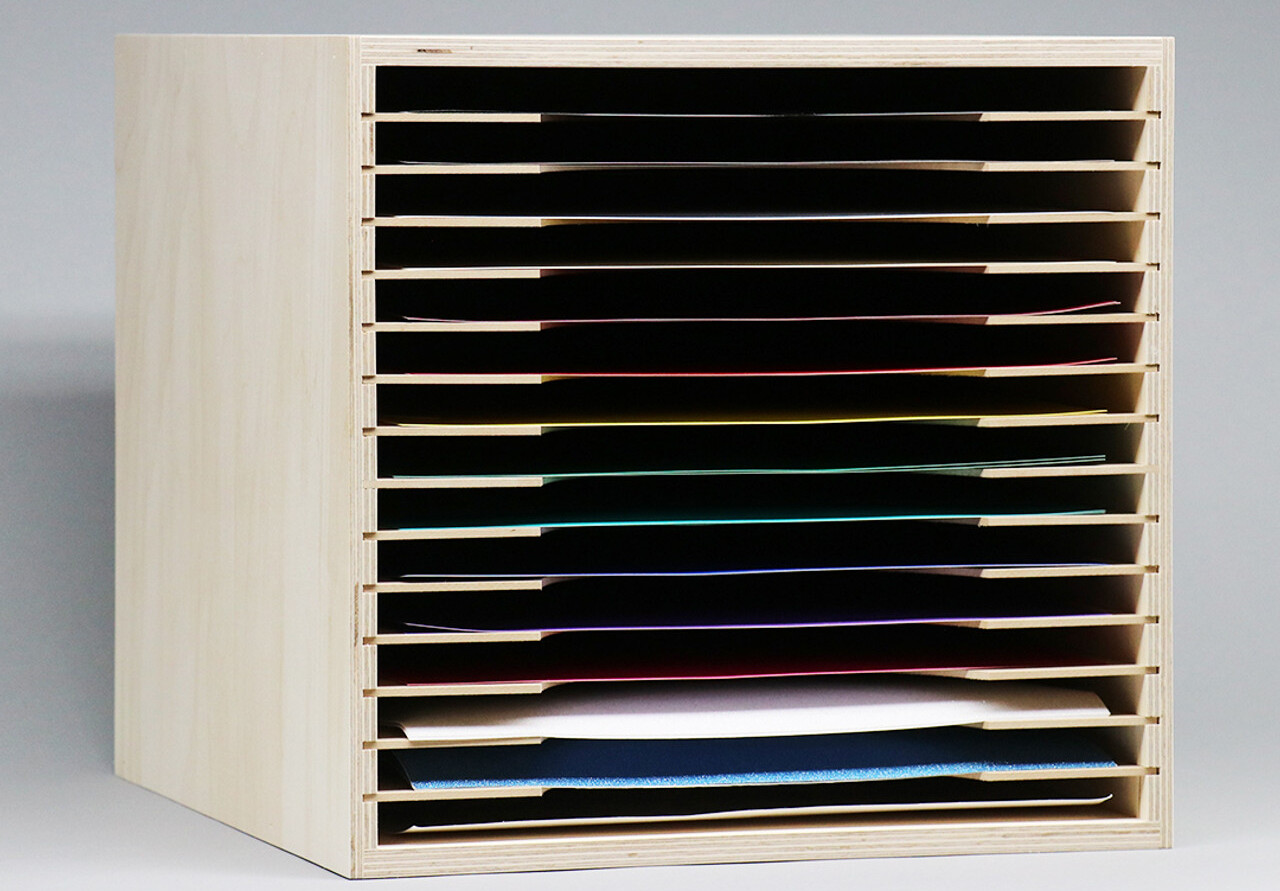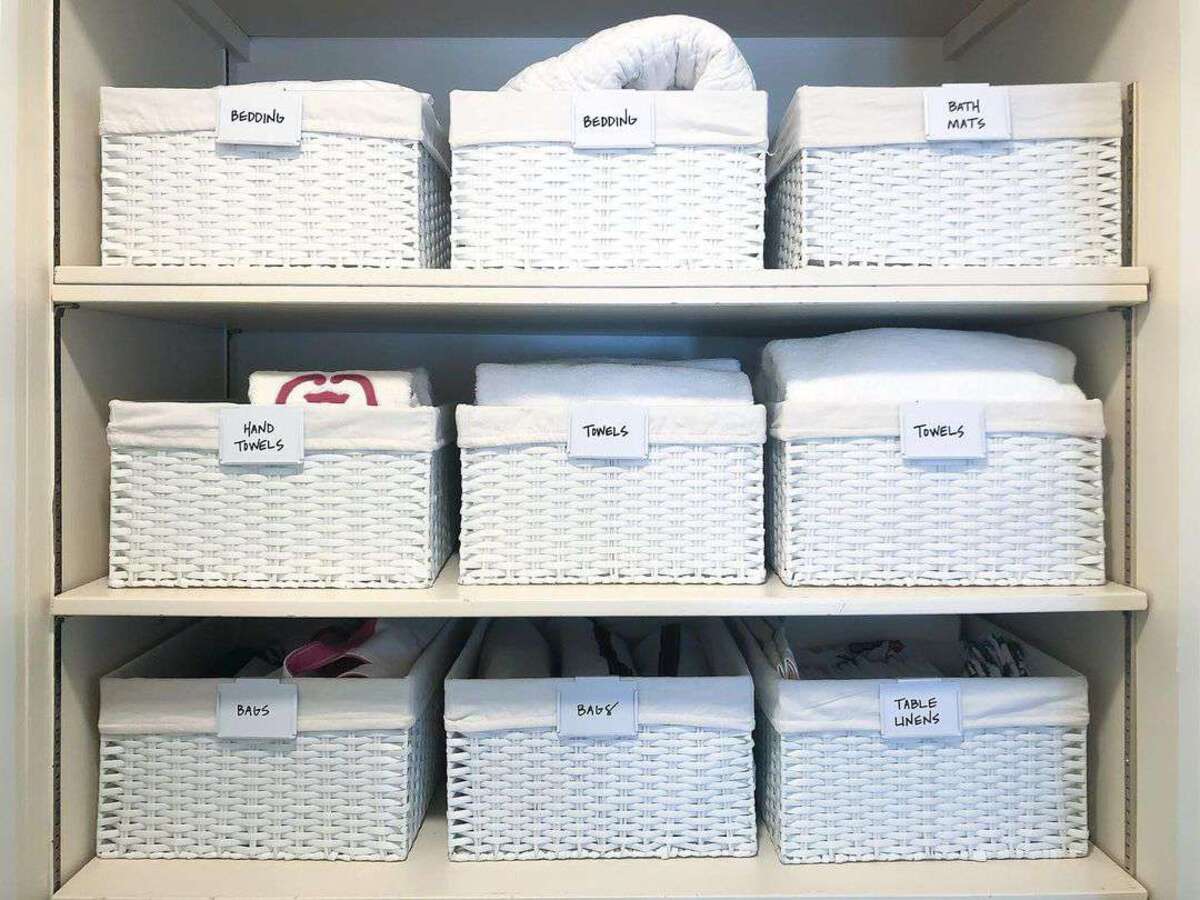

Articles
How To Store Glass Sheets
Modified: January 18, 2024
Learn the best techniques for storing glass sheets and ensuring their safety and protection with our informative articles.
(Many of the links in this article redirect to a specific reviewed product. Your purchase of these products through affiliate links helps to generate commission for Storables.com, at no extra cost. Learn more)
Introduction
Glass sheets are delicate and prone to damage if not properly stored. Whether you are a homeowner with a few spare glass sheets or a business owner dealing with large quantities of glass, it is crucial to have a proper storage system in place to protect your investment. In this article, we will guide you on how to store glass sheets effectively, ensuring their safety and longevity.
Proper glass storage is essential to prevent cracks, chips, and other forms of damage. Additionally, a well-organized storage area allows for easy access and reduces the risk of accidental breakage during handling. By following the tips and techniques outlined in this guide, you can create a storage space that safeguards your glass sheets and minimizes the chances of costly replacements.
Before diving into the specifics of glass sheet storage, it is important to note that certain safety precautions should be taken. Glass can be sharp and cause injuries if mishandled. Always wear protective gloves and goggles when working with glass, and exercise caution when lifting or moving sheets to avoid accidents.
Now, let’s explore the steps involved in storing glass sheets properly, starting with choosing the right storage area.
Key Takeaways:
- Protect your glass sheets by choosing a clean, well-ventilated storage area with consistent temperature and minimal vibrations. Proper preparation, cleaning, and secure stacking will ensure longevity and accessibility.
- Implement regular maintenance and inspection routines to keep your glass sheets in optimal condition. Secure the stored glass sheets, and train personnel to handle them with care to prevent accidents and damage.
Read more: How To Store Stained Glass Sheets
Choosing the Right Storage Area
The first step in storing glass sheets is to identify an appropriate storage area. Ideally, the space should be clean, dry, and well-ventilated. Moisture and humidity can cause glass to become foggy or develop mold, so it’s important to choose a location that minimizes these risks. Avoid storing glass sheets in areas prone to leaks or high humidity, such as basements or attics.
Temperature control is another factor to consider. Extreme temperature fluctuations can cause glass to expand or contract, leading to cracks or breakage. Look for a storage area that maintains a consistent temperature, ideally between 50 and 70 degrees Fahrenheit (10 to 21 degrees Celsius).
The storage space should also be free from any heavy machinery or equipment that could potentially create vibrations. Vibrations can weaken glass and increase the chances of breakage. If you have no choice but to store glass in an area with vibrations, consider using vibration-dampening materials, such as foam padding or rubber mats, to help absorb the impact.
In addition to these considerations, it’s important to have enough space to properly store and organize your glass sheets. You need sufficient room to move around and handle the sheets without the risk of knocking them over or causing damage.
Lastly, ensure that the storage area is secure and inaccessible to unauthorized individuals. Glass sheets are valuable and can be easily damaged or stolen if proper security measures are not in place. Install sturdy locks and limit access to the storage area to authorized personnel only.
Once you have identified the right storage area, it’s time to prepare the space for the glass sheets. Let’s explore the next steps in the process.
Preparing the Storage Space
Before you start storing glass sheets, it’s important to prepare the storage space to ensure optimal conditions for the glass. Follow these steps to get the space ready:
- Clean the area: Remove any dust, debris, or other materials from the storage space. You don’t want anything that could potentially scratch or damage the glass sheets.
- Inspect for moisture: Check the walls, floor, and ceiling of the storage area for any signs of moisture or leaks. Address any issues before proceeding with storing the glass sheets to prevent damage from humidity.
- Eliminate pest infestations: Make sure there are no pests, such as rodents or insects, in the storage area. They can cause damage to the glass sheets, so take necessary steps to eliminate any infestations and prevent future ones.
- Consider lighting: If possible, choose a storage space with minimal exposure to direct sunlight. Prolonged exposure to sunlight can cause the glass to fade or become discolored over time.
- Install protective measures: If you anticipate the need to move the glass sheets frequently or stack them vertically, consider installing protective measures such as padded racks, foam bumpers, or non-slip mats to prevent scratching or sliding.
Once you have prepared the storage space, it’s time to move on to cleaning and preparing the glass sheets themselves for storage. We’ll discuss the next steps in the process in the following section.
Cleaning and Preparing Glass Sheets
Before you store glass sheets, it is crucial to clean and prepare them properly. This ensures that they are free from dirt, dust, and any residue that could potentially cause damage or affect their clarity. Follow these steps to clean and prepare your glass sheets:
- Gather the necessary cleaning supplies: You will need a non-abrasive glass cleaner, lint-free microfiber cloths, and a gentle glass-safe scrubber or sponge.
- Remove any stickers or adhesives: Carefully peel off any stickers, labels, or adhesive residue from the glass sheets using a plastic scraper or your fingernail. Avoid using sharp objects that could scratch the glass.
- Apply the glass cleaner: Spray the glass cleaner onto the surface of the glass sheets, covering the entire area. Be generous with the cleaner to ensure thorough cleaning.
- Wipe the glass: Using a lint-free microfiber cloth, gently wipe the glass in a circular motion to remove any dirt or grime. Pay attention to the edges and corners of the glass sheets where buildup may occur.
- Address stubborn stains: For any stubborn stains or residue, dampen a soft sponge or scrubber with the glass cleaner and gently scrub the affected area. Avoid applying excessive pressure to prevent scratching.
- Dry the glass: Once you have thoroughly cleaned the glass sheets, use a clean, dry lint-free cloth to dry them. Ensure that there are no streaks or watermarks left behind.
- Inspect for imperfections: After cleaning, carefully examine the glass sheets for any chips, cracks, or imperfections. If you find any, set them aside for repair or disposal, as storing damaged glass can lead to further breakage.
- Label and document: As part of your preparation process, consider labeling your glass sheets with relevant information, such as dimensions, date of purchase, or intended use. This will help you identify and retrieve specific sheets easily when needed.
By following these cleaning and preparation steps, you are ensuring that your glass sheets are in optimal condition for storage. Next, we will delve into the proper handling techniques when moving and storing glass sheets.
Proper Handling Techniques
Handling glass sheets requires careful attention and the use of proper techniques to prevent accidents and damage. Here are some essential handling techniques to keep in mind:
- Wear protective gloves and goggles: Before handling glass sheets, always protect yourself by wearing thick protective gloves and safety goggles. This will minimize the risk of cuts and eye injuries.
- Use proper lifting techniques: When lifting glass sheets, use your legs and not your back. Keep your back straight, bend your knees, and lift with your leg muscles to avoid strain and reduce the risk of dropping the glass.
- Use a two-person lift: For larger or heavier glass sheets, it is recommended to have two people working together to lift and move them. This ensures stability and reduces the risk of dropping or mishandling.
- Handle with care: Glass sheets are fragile and can easily crack or break. When handling them, be gentle and avoid impacts, sudden movements, or twisting, as these actions can cause stress fractures or complete breakage.
- Clear the pathway: Remove any obstacles or clutter from the pathway where you will be transporting the glass sheets. This will minimize the risk of tripping or accidentally bumping the glass against objects.
- Use protective padding: Consider using protective padding or blankets to wrap the edges or corners of the glass sheets. This provides an extra layer of protection against accidental bumps or impacts.
- Avoid stacking unevenly: When placing glass sheets on a surface or on top of each other, ensure they are stacked evenly and securely. Uneven stacking can lead to instability and increase the chances of breakage.
- Move slowly and steadily: When transporting glass sheets, move at a slow and steady pace to maintain control. Avoid sudden changes in direction or speed, as these can cause the glass to slide or tumble.
By following these proper handling techniques, you can significantly minimize the risk of accidents or damage to the glass sheets. Next, we will explore how to effectively stack and organize glass sheets for storage.
Store glass sheets vertically in a rack or holder to prevent warping or breakage. Use dividers to keep sheets separated and protect the edges from chipping.
Read more: How To Store Sheets
Stacking and Organizing Glass Sheets
Properly stacking and organizing glass sheets in your storage area is essential for maximizing space and preventing damage. Follow these tips to stack and organize your glass sheets effectively:
- Start with a clean and level surface: Ensure that the surface where you will be stacking the glass sheets is clean and level to provide a stable foundation.
- Use supportive materials: Place foam or rubber pads between the layers of glass sheets to provide cushioning and prevent direct contact between them. This helps to reduce the risk of scratches or breakage.
- Stack sheets of similar sizes together: Group glass sheets of similar sizes together to optimize space utilization. This makes it easier to locate specific sizes when needed.
- Store vertically whenever possible: If your storage area allows for it, storing glass sheets vertically can help maximize space and minimize the risk of breakage. Use vertical racks or stands designed for glass sheets to ensure stability.
- Keep heavier sheets on the bottom: When stacking multiple glass sheets, place the heaviest and largest sheets at the bottom to provide a stable base. Lighter and smaller sheets can be placed on top.
- Leave space between stacks: Allow for some space between different stacks of glass sheets to prevent any potential shifting or accidental contact that may cause damage.
- Keep an inventory system: Establish an inventory system to keep track of the types, sizes, and quantities of glass sheets stored. This will help you locate specific sheets easily and avoid unnecessary handling.
- Label and document: Label each stack or individual glass sheet with relevant information, such as sizes, date of acquisition, or project names. This will make it easier to identify the correct sheets and maintain accurate inventory records.
By following these stacking and organizing techniques, you can optimize your storage space while keeping your glass sheets safe and secure. In the next section, we will discuss how to secure the stored glass sheets to further minimize the risk of accidents or damage.
Securing the Stored Glass Sheets
Securing the stored glass sheets is essential to prevent accidents and ensure their safety while in storage. Here are some measures you can take to secure your glass sheets:
- Use straps or restraints: If you are storing larger glass sheets or stacks, consider using straps or restraints to secure them in place. This helps to prevent shifting or toppling during an earthquake or any sudden movement.
- Install edge protectors: Edge protectors are plastic or foam strips placed along the edges of the glass sheets. They provide an additional layer of protection and reduce the risk of chipping or cracking.
- Place warning signs: Clearly mark the areas where glass sheets are stored with visible warning signs. This alerts people to exercise caution and reminds them to handle the glass with care.
- Keep aisleways clear: Ensure that there are clear and unobstructed aisleways within the storage area. This allows for easy and safe access, reducing the risk of accidental contact with the glass sheets.
- Limit access to authorized personnel: Restrict access to the storage area to authorized personnel only. This helps prevent unauthorized handling or accidental damage to the glass sheets.
- Regularly inspect restraints and supports: Periodically check the straps, restraints, and edge protectors to make sure they are in good condition. Replace any damaged or worn-out components promptly.
- Implement a maintenance schedule: Have a regular maintenance schedule in place to clean and inspect the storage area. This ensures that any issues, such as leaks or pests, are identified and addressed promptly to prevent damage to the glass sheets.
- Train employees or personnel: If you have employees or personnel who handle the glass sheets, provide proper training on handling techniques and safety protocols. This ensures that everyone is knowledgeable and follows the necessary precautions.
By taking these steps to secure your stored glass sheets, you can minimize the risk of accidents, damage, and loss. In the next section, we will discuss the importance of regular maintenance and inspection to ensure the longevity of your glass sheets.
Regular Maintenance and Inspection
Regular maintenance and inspection are crucial for ensuring the longevity and safety of your stored glass sheets. By implementing a maintenance routine and conducting regular inspections, you can identify and address any potential issues before they escalate. Here are some guidelines for maintaining and inspecting your glass sheets:
- Clean the storage area: Regularly clean the storage area to remove dust, debris, or any substances that could potentially damage the glass sheets. Use a soft cloth or vacuum cleaner to gently remove any particles.
- Check for leaks or moisture: Periodically inspect the storage area for signs of leaks or moisture. Moisture can lead to foggy glass or mold growth, which can damage the sheets. Address any issues promptly to maintain a dry environment.
- Inspect for signs of pests: Look out for any signs of pests, such as rodent droppings or chewed materials. Pests can cause damage to the glass sheets, so take necessary steps to eliminate infestations and prevent recurrence.
- Examine the glass sheets: Regularly inspect the glass sheets for any signs of damage, such as chips, cracks, or scratches. If you notice any issues, set those sheets aside for repair or replacement to prevent further damage.
- Check restraints and supports: Inspect the straps, restraints, and edge protectors regularly to ensure they are secure and in good condition. Replace any worn-out or damaged components to maintain proper support and protection for the glass sheets.
- Review inventory records: Regularly update and review your inventory records to ensure accuracy. This helps you keep track of the types, quantities, and locations of the glass sheets, making it easier to retrieve specific sheets when needed.
- Monitor environmental conditions: Keep an eye on the temperature and humidity levels in the storage area. Fluctuations in temperature or excessive humidity can compromise the integrity of the glass sheets. Consider using a hygrometer to monitor humidity levels.
- Train employees or personnel: If you have employees or personnel responsible for the storage area, provide them with training on maintenance procedures and inspection protocols. This ensures that everyone is aware of their responsibilities and can contribute to maintaining the glass sheets’ quality.
By incorporating regular maintenance and inspection into your glass storage routine, you can proactively identify and address any issues that may arise, ensuring the longevity and integrity of your glass sheets. In the next section, we will conclude our guide on storing glass sheets and summarize the key points to remember.
Conclusion
Properly storing glass sheets is essential to protect them from damage and ensure their longevity. By following the guidelines outlined in this article, you can create a safe and organized storage system that preserves the quality and integrity of your glass sheets. Here are the key points to remember:
First, choose a suitable storage area that is clean, dry, well-ventilated, and secure. Maintain a consistent temperature and minimize vibrations to prevent damage to the glass sheets.
Next, prepare the storage space by cleaning it, addressing any moisture issues, and eliminating pest infestations. Consider installing protective measures such as padded racks or rubber mats to prevent scratches and impacts.
Clean and prepare the glass sheets before storing them, ensuring they are free from dust, residue, and any stickers or adhesives. Inspect for imperfections and label each sheet for easy identification.
Practice proper handling techniques by wearing protective gloves and goggles, using proper lifting techniques, and moving glass sheets with care to prevent accidents and damage.
When stacking and organizing the glass sheets, group similar sizes together, use supportive materials, store vertically when possible, and leave space between stacks to prevent shifting or accidental contact.
Ensure the stored glass sheets are properly secured with straps or restraints, and consider installing edge protectors. Clearly mark the storage area with warning signs and keep aisleways clear to reduce the risk of accidents.
Implement a regular maintenance and inspection routine to clean the storage area, check for leaks or pests, examine the glass sheets for damage, and review inventory records. This helps maintain a safe and optimal environment for the glass sheets.
By following these guidelines, you can ensure that your stored glass sheets remain in excellent condition, minimizing the risk of breakage, scratches, or other forms of damage. This will save you time and money in the long run, as you won’t need to replace damaged glass sheets.
Remember, proper glass sheet storage is not only about protection, but also about organization and accessibility. With a well-organized system in place, you can easily locate specific sheets when needed, making your work more efficient.
Take the time to implement these storage practices, and your glass sheets will remain pristine and ready for use whenever you need them. So, go ahead and apply these tips to create the perfect storage solution for your glass sheets!
Frequently Asked Questions about How To Store Glass Sheets
Was this page helpful?
At Storables.com, we guarantee accurate and reliable information. Our content, validated by Expert Board Contributors, is crafted following stringent Editorial Policies. We're committed to providing you with well-researched, expert-backed insights for all your informational needs.















0 thoughts on “How To Store Glass Sheets”